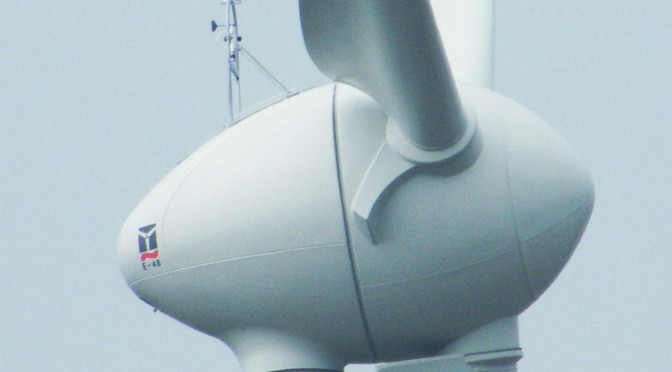It is easy to lose track of things in large storage facilities but not at the wind turbine manufacturer Enercon’s facility in Magdeburg though, where a positioning system with digital inventory management increases transparency and expedites processes.
Up to 50 meters long and weighing tons, the rotor blades for wind energy systems that Enercon produces in its facility in Magdeburg are truly impressive.
They require the corresponding amount of space when they are stored temporarily at the plant premises of 0.5 square kilometers, waiting to be delivered.
For a long time, the external storage facility was organized by telephone, information board and manual documentation. That was a source of potential errors. In addition, it cost a lot to keep the inventory records current, for example when employees moved a module around on the premises. Inventory had to be taken to maintain an overview of the warehouse.
The management of Enercon was long aware that this method required a lot of time and money. However, an alternative that avoided media failures was not in sight — not until the plant planners from Enercon met with experts from the Fraunhofer Institute for Factory Operation and Automation IFF in Magdeburg, Germany, to exchange ideas. “In earlier times, there were a lot of media failures between the bulletin board, paper printouts, Excel spreadsheets and other aids in stockkeeping,” recalls Tobias Kutzler, project manager at IFF. The IFF project team suggested a solution for managing the outdoor storage facility that simplified the work processes and reduced inventory management expenditures considerably.
GPS module and motion sensors simplify taking inventory
The idea: during final acceptance, a locator the size of a small paperback book is attached to each module. Using satellite data, the GPS module contained in it calculates its position down to approximately one meter. This position is transmitted by radio signals to the control center, where the module is registered in a digital map. A motion sensor detects when the part is being moved and signals the new location of the rotor blade on the grounds. Only a few mouse clicks are required to retrieve the location of the module and its production and storage history. This saves time: If, previously, taking inventory required up to two days, the time required now drops to less than 5 minutes.
Two RFID chips (one in the locator and a second one directly on the module) complete the continuous monitoring. The digital nameplates serve as a type of logbook. They are scanned with a portable reader and contain information on, for instance, module number, module type and origin. This way, the parts can still be identified even on the wind turbine construction site or later during maintenance work or repairs.
An adapter attached to the rotor blade flange, i.e. its connection, is used to mount the locator. If a storage facility employee removes the locator before delivery he or she must merely set it down upside down for a certain amount of time. The part is then removed from the stock list, without entering it in the computer.
The employees can rely on the software even when planning their storage facility. The software suggests the ideal storage location for each rotor blade so that space is utilized as efficiently as possible. Employees may accept the suggestion — or specify a suitable storage site themselves. The software recognizes that and computes the second most option. The era of countless documents and phone calls is over at Enercon in Magdeburg. “Today, there is a large touchscreen and distributed workstations on which any information can be retrieved,” according to project manager Kutzler.
More than just modules can be tracked down in storage facilities with the locators. A steel manufacturer has equipped its vehicles with them to measure the stress on them when they are moving heavy steel parts. The IFF has even equipped electric cars with the modules for the Harz.
EE-Mobility research project on electric vehicle networks to document the vehicles’ use. Among other things the researchers identified the charge levels of the batteries with which the vehicles are driven and parked. This helps optimize the charging station infrastructure and assess the use of electrical vehicles as energy buffers in smart grids.


